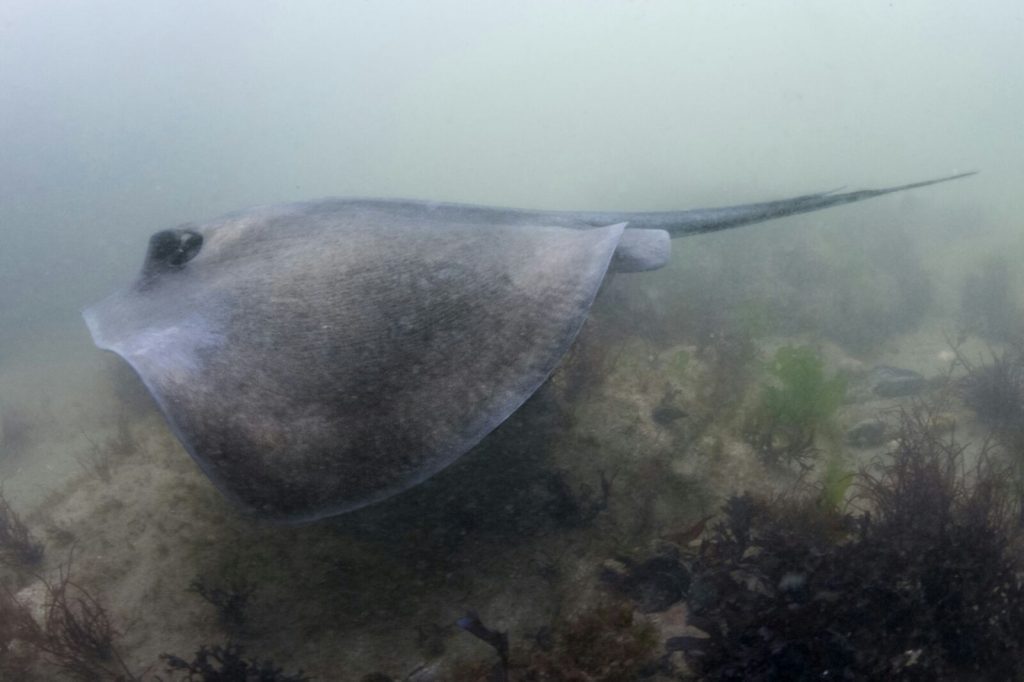13 April 2016
For 37 years the Mid-Channel Conference has provided an international forum for Channel fishermen to agree working arrangements that allow different fishing gears to co-exist. The Conference also takes an active interest in current resource management issues and following the conclusion of this year's meeting, which was held on 4th and 5th April, in St Helier Jersey, the following communique on skates and rays management was released.
Skates and Rays Management
Many of the individual species comprising the Skates and Rays group of stocks are widely distributed within the Channel. Access to these stocks is shared between a number of member states and types of fishery. There is therefore a shared and joint responsibility to manage those stocks sustainably; and where possible to deliver high yields, as the basis for a profitable and thriving fishery.
Problems
The skates and rays fishery faces a number of significant challenges:
1. The species are slow growing and reach sexual maturity at a relatively late age
2. The physical characteristics of skates and rays can make selectivity difficult
3. Since 2009 the 9 skates and rays species caught in the Channel have been managed under a single TAC, despite the fact that these individual species have very different conservation statuses. This has led to sub-optimal harvesting of abundant species as well as insufficient protection for depleted species
4. Skates and rays are considered to be data-poor, leading the European Commission to apply a precautionary approach. This also has led to sub-optimal harvesting, without noticeably improving the conservation status of depleted species
5. From the 1st January 2016, the EU landing obligation is being phased in to the demersal fisheries. By 2019, all regulated species will be subject to the landings obligation unless specifically exempted. Skates and rays and elasmobranchs generally, will have a propensity to choke* mixed fisheries and are therefore are particularly problematic within the context of the landing obligation
6. It will be important to develop solutions to the problem of chokes caused by elasmobranchs in mixed fisheries. Solutions may include:
- Avoidance
- Gear selectivity
- High survival exemption
- Listing particularly vulnerable species within the group as prohibited species, requiring their return to the sea
- Other measures
7. There is insufficient information available on the spatial distribution of some skates and ray species; there may be some misalignment of stock distribution with management areas
8. The bluntness of the group TAC for skates and rays has in recent years, led to a number of abrupt and insufficiently considered management decisions (notably prohibitions on blond ray and small-eyed ray)
9. Placing individual species on the banned/prohibited list with inadequate scientific underpinning or discussion has caused a great deal of unnecessary hardship in recent years in the Channel fisheries. The absence of a rigorous protocol governing such decisions has led to questionable outcomes.
10. It is legitimate therefore, to question whether a single group TAC is an appropriate way to control fishing mortality on skates and rays
11. If there is to be a move away from a single group TAC, it will be important to consider:
The implications of an alternative approach, not least the issue of chokes
- The advantages and disadvantages of alternative approaches (such as various forms of spatial management)
12. The most immediate obstacle to moving towards a more sensitive and effective management regime for skates and rays is the lack of data on which to base management decisions
Solutions
Against the background outlined above, this Conference takes the view that it will not be possible to introduce a more sensitive and effective management regime for skates and rays until there has been a quantum improvement in the amount and quality of the data available on these species and the fisheries which are dependent on them.
The highest priority should therefore be given to identifying and securing the financial and human resources necessary to move skates and rays out of data deficiency. The way that this is done will be important and it is our considered opinion that this should involve:
- Collaboration between fishermen, scientists, fisheries administrators and other relevant stakeholder in an open and transparent process
- Coordination of the existing and future research projects in this area to ensure that knowledge is properly shared
- Effective dialogue and communication between all parties
- Priority areas should include:
- Scientific underpinning for high survival exemptions where appropriate
- Development of a protocol for the designation of prohibited species
- Testing of alternative (non-TAC) ways of managing skates and rays
- Work on avoiding chokes in mixed fisheries
- A broad tagging project to provide understanding of the distribution patterns of the different species
In addressing these issues, we are aware that not only are there a number of relevant scientific research projects underway within research institutes and fisheries administrations but that two important stakeholder meetings have already been held, in Amsterdam on 8th December 2015 and 1st/2nd February 2016. These two meetings, involving scientists, administrators and stakeholders have laid the foundations for an inclusive approach and have spawned a number of initiatives that are also highly relevant.
Momentum
The two Amsterdam meetings have created a determination and commitment to deal with the complex issues of managing the skates and ray fisheries. There is an urgency to this matter, not least that created by the imminent application of the landing obligation to this group of species. This Conference calls on member states, management authorities, the advisory councils, the scientific and stakeholder communities, and above all, the fishing industry to get behind this initiative. It is only with the knowledge held by fishermen and cooperation between the industry and scientists that we will see progress made away from the current unacceptable position.
Notes
* Chokes: exhaustion of a minor ray species could potentially prevent a vessel/fleet/ member state from catching its main economic quotas

